经济管理出版社书目信息管理系统的设计与开发(C#.NET)
无需注册登录,支付后按照提示操作即可获取该资料.
经济管理出版社书目信息管理系统的设计与开发(C#.NET)(17000字)
摘 要
数字化和网络化是当今时代的显著特征,出版社在作为信息的加工者、传播者的同时又是一个企业,它亟需借助信息技术突破传统运作模式,面对出版行业的这种现状,本文针对经济管理出版社的具体需求,描述了“书目信息管理”这一系统的设计及实施方案,详细阐述了整个应用系统的设计思路。本系统帮助现代出版社充分利用和挖掘出版资源,提高出版社运营效率,降低运营成本,通过网络化和信息化的实现,结合网络运营的新型模式,高效、动态的管理出版社的图书资源,并对外进行网络营销。本系统共分为三个模块:书目信息管理、网络营销系统、书目数据生成。其中书目管理包括对出版社书目的浏览、增加、修改、各种方式的查询及分类管理等等;网络营销系统是通过对书目信息和客户信息的有效管理,借助电子邮件群发功能来向客户进行图书宣传,可以根据模版自动插入书目信息生成邮件;书目数据生成包括书目数据的导入导出及模版管理,可以以多种模板实现书目数据库中的书目信息与Excel和word之间的转换。
关键词:书目管理;网络营销;邮件群发;出版社
ABSTRACT
The digitization and the network is the remarkable characteristic of the present era, the publishing house are not only the information processors and disseminators but also an enterprise, it urgently need to breakthrough tradition operation pattern with the information technology, facing this kind of present situation of the publication, this article described the project of the design and execution of the system which is called "the book information management system" to meets the concrete need of the economical management publishing house, and elaborated the entire design of the application system in detail. This system help modern publishing house make full use of the publication resources and excavate the publication resources, enhances the efficiency of the publishing house, reduces the cost of the operation, manage the books resources of the publishing house effectively and dynamically by combines the web, information and new operation pattern together, and carries on the external network marketing. This system has three modules: Book information management, online marketing system and book data generating. Book management includes the browsing, increasing, revision of the book information, and it can search the book information with kinds of condition, and it can carry out the classified management of the book information. The network marketing system advertise the book by e-mail marketing through to the effective management of the book and customer information, it can produce the e-mail with book information according to the pattern plate automatically; book data generating can make the book information in or out of the database, and convert the book information to Excel or Word according to kinds of pattern plate.
Key words: Books management;Network marketing;Massive e-mail;Publishing house;
本系统以Windows系统为操作平台,以SQL server为数据库,采用Microsoft visual C#.NET 为开发工具。从硬件上来看,经济管理出版社已经具备了比较良好的网络环境,完全可以实现网络通信,主机的配置也完全能够满足存储、软件等的要求。从软件上来看, Windows操作系统,以及SQL server数据库均为目前流行的系统软件,应用广泛。Microsoft visual C#.NET 亦为目前颇受欢迎的一种面向对象的开发工具,其软件的开发基本不成问题。
本系统所涉及的部门主要有图书编辑部和发行部。
经济管理出版社共有四个编辑部,分别负责经济类、财务会计类、经营管理类和外文经管译注类图书的组稿和编辑。编辑部是出版社的核心部门,其主要职责是协助制定和实施出版社的选题计划,即负责出版物的稿件的组织、编辑等工作, 以往图书从选题到审校的整个过程及图书的信息都是靠人工记录在流转卡上的,信息繁杂,工作进程脉络不清晰,并且没有专门的图书信息的管理系统,如果参加书展,在制定图书书目的宣传手册时,往往要靠人工查找并重新录入、排版,费时费力,可靠性不高。本系统可以使编辑在编校好一本书后,一次性的将图书信息输入到系统中,随时都可方便的查找任何一本图书的相关信息,并可以轻松的将其按照一定样式以多种文件格式输出,方便快捷。
顾名思义,发行部主要负责与客户的联系与图书的销售。本系统反映了图书发行的一个方面,即利用电子邮件与客户联系,并及时把最新的图书信息通过网络传达给客户。本系统采用C/S结构,将图书管理与邮件发送系统整合在一起,使发行员再也不必登录到自己的电子邮箱费力的查找并输入相关的书目信息,而是轻松、简单的将书目信息导出发送即可。
系统设计特点
本系统具有如下特点:
满足出版管理的随机信息需求,通过计算机信息服务系统及时收集与加工、合理存贮信息数据,随时提供查询功能,为出版社管理提供便捷的信息服务。
用这套系统后只要编辑平时把图书信息输入,就能轻松完成数据的积累,改善了以往编辑要耗费大量人力物力编排书目的情况,可以很快完成书目宣传册的印制等工作。
可以应用不同样式的邮件模版向用户群发邮件,可以主动利用因特网进行网络营销,向书店、团体等快速提供出版物生产与销售信息,提高效率降低成本。
系统采用客户机/服务器(Client/Server)模式,所有信息均存放在数据库服务器上,各客户机通过网络与数据库服务器通讯,数据与应用安全地隔离,可确保数据存放的安全性。
生成多种文件格式的数据,如:Word、Excel、Text,实现数据的导入、导出,使数据的存储、使用都更加便捷。
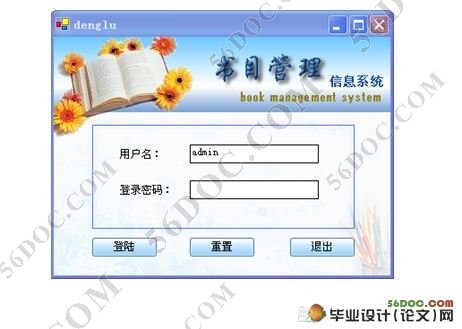
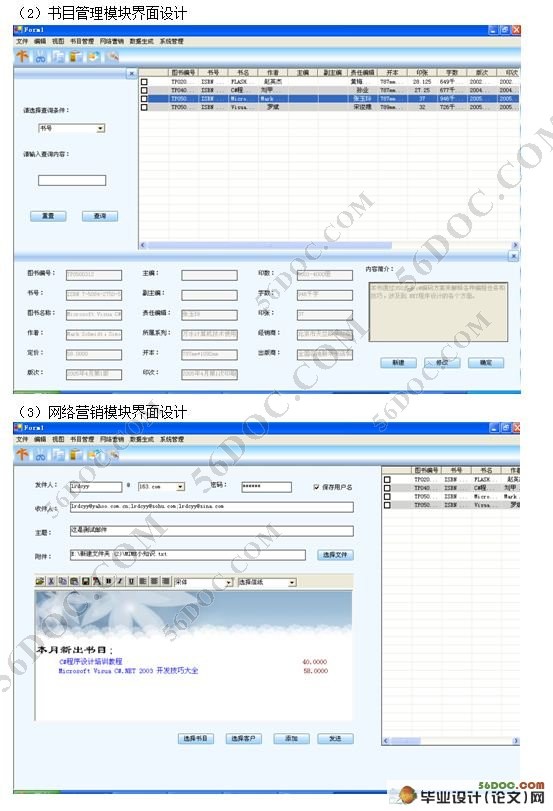
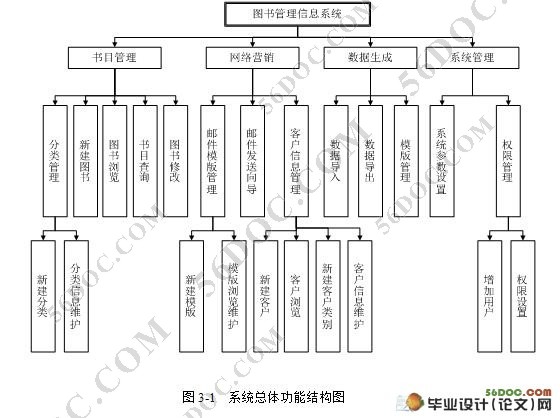
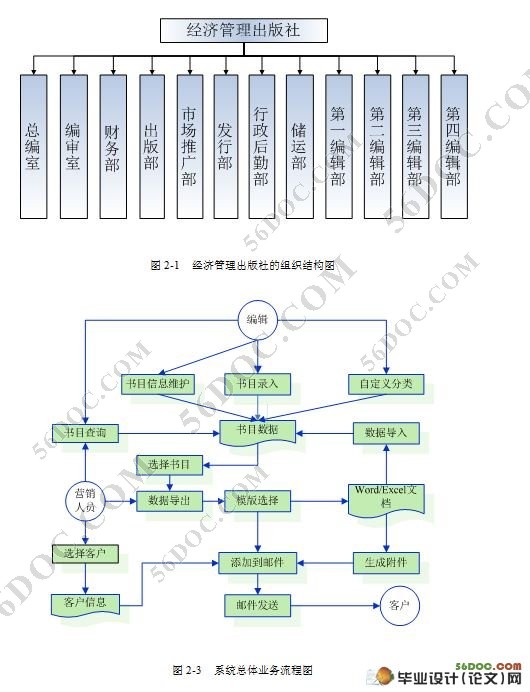
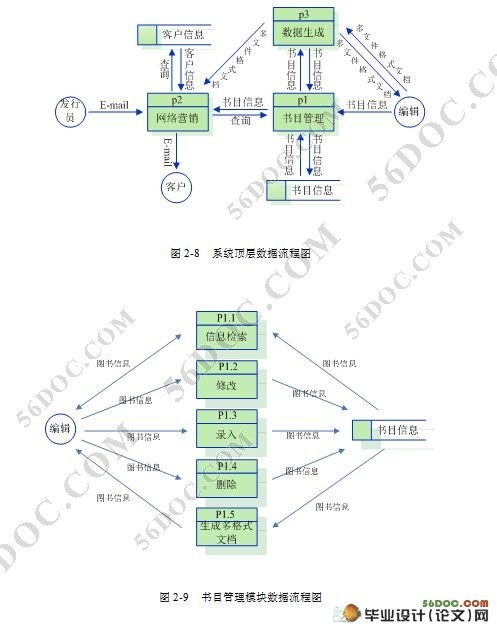
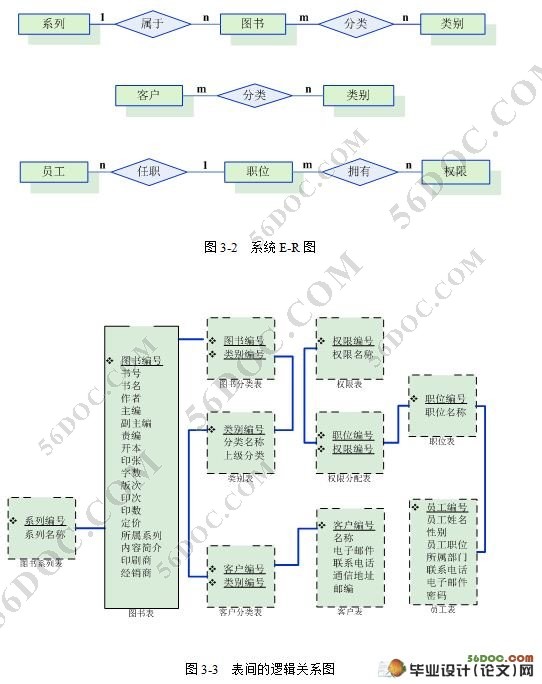
#p#副标题#e#
目 录
引 言 1
第一章 系统概述 2
1.1系统开发背景 2
1.2系统国内外发展现状及开发意义 2
1.3系统设计特点 3
第二章 系统分析 4
2.1系统可行性分析 4
2.1.1经济可行性 4
2.1.2技术可行性 4
2.1.3社会可行性 4
2.1.4人员可行性 5
2.2系统开发原则 5
2.3系统需求分析 5
2.3.1用户需求情况 6
2.4组织结构图与职能分析 6
2.4.1经济管理出版社组织结构图 6
2.4.2职能分析 6
2.5系统业务流程图与分析 7
2.5.1系统业务流程图 7
2.5.2业务流程分析 8
2.6系统数据流程图与分析 10
2.6.1系统数据流程图 11
2.6.2数据流程分析 11
2.7数据字典 13
2.7.1 数据元素 13
2.7.2 数据结构 14
2.7.3 数据流 15
2.7.4处理逻辑 15
2.7.5 数据存储 16
2.7.6 外部实体 16
第三章 系统设计 17
3.1系统总体结构设计 17
3.2系统模块功能设计 17
3.2.1书目管理模块的功能设计 17
3.2.2网络营销模块的功能设计 18
3.2.3数据生成模块的功能设计 19
3.2.4系统管理模块的功能设计 19
3.3系统代码设计 19
3.4系统数据库设计 20
3.4.1 概念设计 20
3.4.2 系统物理结构设计 22
3.5系统输入、输出及界面设计 26
3.5.1输入设计 26
3.5.2输出设计 26
3.5.3界面设计 26
第四章 系统实施 28
4.1系统实施环境 28
4.1.1开发工具 28
4.1.2数据库 28
4.1.3运行平台 28
4.2系统运行与调试 28
4.3系统维护 29
第五章 总结 30
5.1系统特点 30
5.2系统存在的问题 30
5.3系统展望 30
参考文献 32
附 录 33
附录一:英语原文 33
附录二:中文翻译 39
致谢词 44
